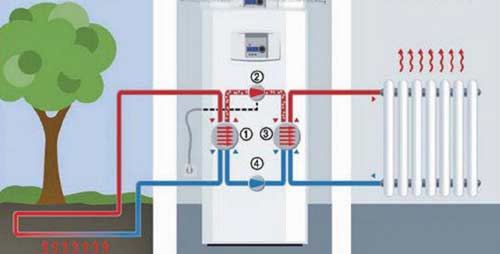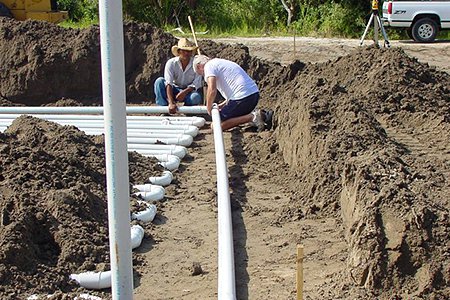An important condition for the effective functioning of the greenhouse in the winter season and obtaining a good harvest even in the conditions of ideal sealing is the creation of an optimal climate. Today, together with traditional methods of greenhouse heating, alternative sources are used, to which the geothermal can be attributed. This method of heat heating is based on the laws of nature and renewable energy resources.
Content
Advantages of geothermal heating greenhouses
When choosing a method of heating a greenhouse, like any other room, the main criterion is high performance and maximum efficiency. It is such a requirement that the geothermal heating system is responsible. In addition, it is distinguished by a number of other advantages, namely:
- Absolute non-volatility - geothermal installations can operate due to thermal energy of water, air and even soil.
- The absence of any costs during operation and need to maintain.
- Durability - the average service life of such a system is approximately 50 years.
- The possibility of maintaining the optimal microclimate in the greenhouse all year round due to the possibility of regulating humidity, etc.
- Ecology is the lack of harmful emissions into the surrounding space during operation.
- The ability to easily drop the placement of a large area to 150 square meters and ensure that it is warmly used.
Principle of operation of the geothermal heating system of greenhouse
As you know, at the great depth of the land of the earth have a constant positive temperature even in winter.
- The principle of operation of this heating system is to use the energy of the Earth and its multiple increase.
- With the help of special geothermal pumps, the energy of the soil or groundwater is converted into heat, which in the future heats the coolant.
- Thus, the geothermal heating system is able to provide all year round air temperature in the greenhouse at the level of 23-27 degrees Celsius, which may well be enough for the growth and development of many vegetable and fruit crops.
Design of geothermal heating system
The design of the geothermal system, at first glance, quite complicated. However, in fact, if you understand well, everything is extremely simple.
- It consists of two contours that are located in the greenhouse and underground.
- The first is necessary for the heating of the room, and the second is designed to collect heat, that is, is a heat exchanger. It is usually installed at a depth below the ground freezing point either in rapid reservoirs. At the same time, in the first case, it is necessary to drill a well depth to 100 meters, which carries a lot of costs.
- In the pipes of the second circuit, the coolant is poured, which can be ordinary purified water or water with antifreeze in a given proportion.
- The coolant, in turn, taking the energy of the Earth, transfers it to the heat pump, which has two more heat exchanger.
- Thus, this is a highly efficient and economically advantageous heating system, which can be rightfully considered to our future.
The process of arrangement of the geothermal heating system of greenhouse with their own hands
- The geothermal heating system is built long before the construction of the greenhouse itself. At the same time, the density of air ducts is calculated in advance, which should be approximately 2.7 meters per meter square area of \u200b\u200bthe greenhouse.
- Further on the land plot, in the area slightly exceeding the size of the future structure, the depth of the depth equal to the level of soil freezing in winter (this is about 3 meters). With such a task it is difficult to handle manually, therefore, it may be necessary to attract heavy construction equipment, such as a bulldozer.
- The slopes of the pit isolate at a depth of about 0.7 meters by polystyrene foam plates, and the bottom of the recovery is falling asleep at first with small rubble, and then with sand for 30 centimeters, after which it is neatly tamped.
- Then they make laying air ducts on advanced circuits. To do this, use PVC pipes for sewage with a diameter of about 110 mm, which are fixed with the wire. At the same time, they must be at a distance of about 30 cm from the walls of the pit. The entire pipeline is divided into separate sections of 2 meters, which in the center are connected by tees, and the central branch is excreted on the surface along the longitudinal axis.
- Side discharges of each site should also be removed on the surface. Altogether with central branching should be tightly closed with polyethylene membranes.
- When the entire system is completely mounted, the earth falls asleep to the upper boundary of thermal insulation.
- After that, the plot outside the perimeter of the greenhouse is covered with polystyrene foam and the earth is finally falling asleep.
- Then, when the greenhouse is built, the central branches of the air duct are increasing, so that the ends of the pipes are located at about 30 cm from the roof. Side branches do not need to build up, they can remain at the same level.
- At the ends of the outgoing airlows, you can set the usual ventilation fungus, exhaust fan or filter installation.
A clear process of arranging geothermal heating can be seen on the video:
























